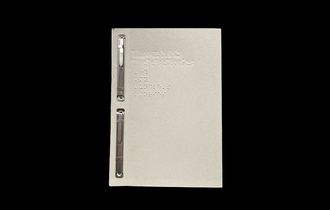Visual Communication
Our Town
The visitor first encounters a sign saying “Welcome to our town–Population: 11”. Lettering on the sign is crafted–florid and organic–recognisable both from an imagined, bucolic past and from our hyper-networked present. We’re on the periphery, early morning, a car driven by an older man with a younger person in the back seat passes us (A taxi? The taxi of dad?). The sound of the engine fades and silence returns to the scene.
COCK-A-DOODLE-DOO! Another greeting from the town’s twelfth inhabitant draws our attention back to the huddled buildings ahead. Following the river that the town is defined by, we are soon in the central square. There, we have a library, a church, a community centre, a news stand, an all-night store, a natural history museum, there’s even a well in the centre. But despite the familiarity something is a bit…different? The library is a human being, the museum is not a building but a URL, in the distance a hill is talking to us and there seems to be a body lying in the ditch next to the well…
Apologies dear reader, the above text is a metaphor. We wanted to extend an observation a student raised during a group feedback session: that this years’ projects resembled a town. Structures were being proposed, often at 1:1 scale that engage and commit to a space, a community or a subject. There is a kind of idealism in the work, and where the town idea seems to work best is in the idea of neighbouring, in sharing spaces, social and intellectual life. If it were a town, it would be designed from the grass roots up. These degree projects all flow from sources of criticality which have developed over the year into something committed and active, a lyrical design.
As our students anticipate the next act, we are proud and hopeful that they will continue to operate in the other realities in and outside of Konstfack.
Sara Teleman
Professor in Illustration
Patrick Lacey
Professor in Visual Communication










